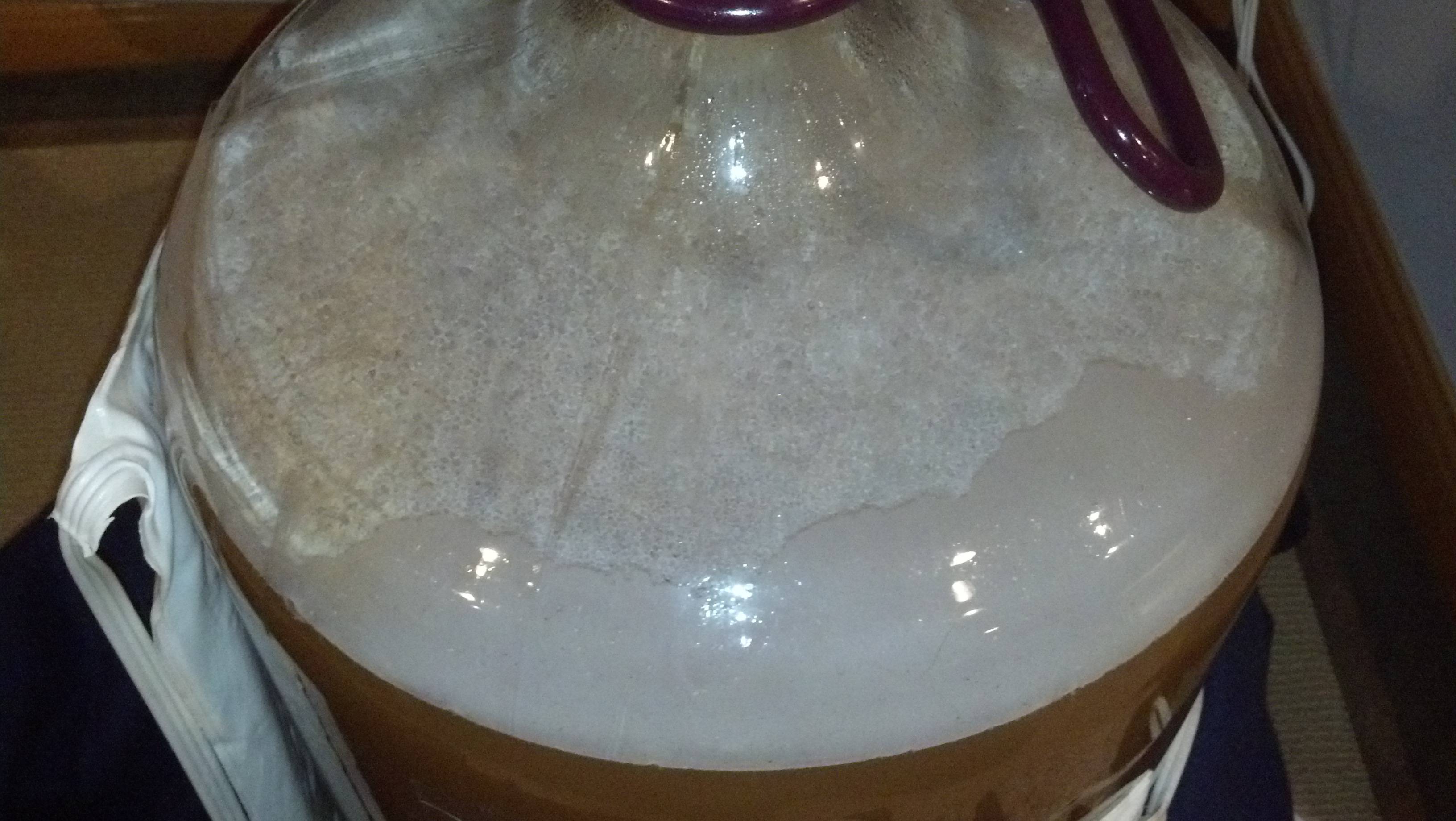Brewed this up yesterday. First bacteria inoculation, first no sparge, first no boil, first no chill. What an easy brew day.
Went for a more traditional gravity so I cut the grains and hops down a bit.
4.5# pale us 2-row
3.5# wheat malt
0.75 tettnanger
Protein rest at 118f for 20min. Sacc rest at 148-150f for 60min. Mash out at 165f with remainder of water. This was a very thin mash at that point. Drained without vorloufing into kettle and heated to 185f to pasturize, killed heat, covered and let free fall to 120f (about 4hrs).
Pitched homemade lacto starter (see above post) and within 12hrs this carboy is going nuts! Nice krausen, active airlock, and swirling wort. I am keeping it at temps, 100-110f, in a small sealed bathroom with a small space heater fan pointed at it about 12" away. It's actually holding temps quite well this way, since I don't have a way to heat my term chamber as of yet. Gonna give of the full 48hrs before pitching US-05.
Couple questions:
1. Should I add oxygen at Sacc pitch?
2. Will the time above 140f in the kettle cause DMS?
3. How long in primary after the US-05 is pitched until this might be ready to keg?
To answer your questions:
1) Not sure, I never do oxygen additions other than shaking the carboy.
2) I have never noticed any DMS,
3) That depends on your taste buds and what you think the beer should taste like. I have kegged it after about 4 weeks before, but I think the best choice is to wait about 2-3 months. The reason for this is that I believe the lacto keeps working on sugars that the yeast cannot eat, and so keeps improving the taste of the beer and cleaning up the beer long after the Sac gives out.
My preferred way to package this beer is in Champagne or Belgian bottles for 2 reasons. First, the added wire and cork alongside the thicker bottles assures that I will not get any bottle bombs. Secondly, I can then store these bottles for months to years and actually measure how much it has improved over time. I just found a Gose (similar recipe, different style) of mine from a year and half ago and it is much better than when I first had it.
Try it out and see what works best for you. Post some pictures and updated when you can!







































![Craft A Brew - Safale BE-256 Yeast - Fermentis - Belgian Ale Dry Yeast - For Belgian & Strong Ales - Ingredients for Home Brewing - Beer Making Supplies - [3 Pack]](https://m.media-amazon.com/images/I/51bcKEwQmWL._SL500_.jpg)





















